Bernkastel 12 (5486108438).jpg on:
[Wikipedia]
[Google]
[Amazon]


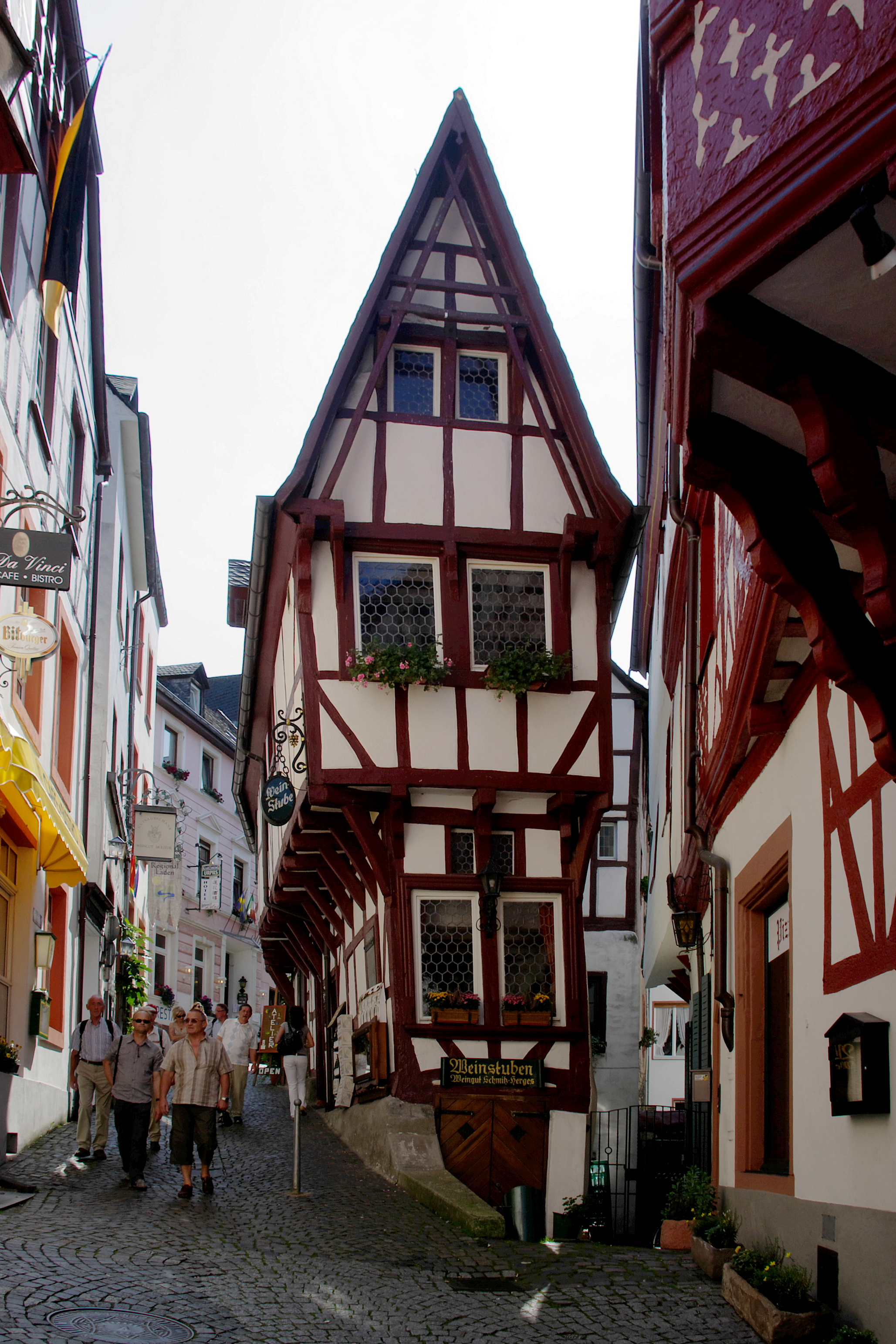

 Bernkastel-Kues () is a town on the
Bernkastel-Kues () is a town on the

 The town's
The town's

Middle Moselle
The Middle Moselle or Central Moselle (german: Mittelmosel) refers to the approximately 120-kilometre-long section of the river Moselle, in the state of Rhineland-Palatinate in Germany from the city of Trier to Zell. The subsequent section of t ...
in the Bernkastel-Wittlich
Bernkastel-Wittlich (German: ''Landkreis Bernkastel-Wittlich'') is a district in Rhineland-Palatinate, Germany. It is bounded by (from the north and clockwise) the districts of Vulkaneifel, Cochem-Zell, Rhein-Hunsrück, Birkenfeld, Trier-Saarbur ...
district in Rhineland-Palatinate, Germany. It is a well-known winegrowing
Viticulture (from the Latin word for ''vine'') or winegrowing (wine growing) is the cultivation and harvesting of grapes. It is a branch of the science of horticulture. While the native territory of ''Vitis vinifera'', the common grape vine, ran ...
centre. The town is a state-recognized health resort (''Erholungsort''), seat of the ''Verbandsgemeinde'' of Bernkastel-Kues and birthplace of one of the most famous German polymaths, the mediaeval
In the history of Europe, the Middle Ages or medieval period lasted approximately from the late 5th to the late 15th centuries, similar to the post-classical period of global history. It began with the fall of the Western Roman Empire a ...
churchman and philosopher Nikolaus von Kues
Nicholas of Cusa (1401 – 11 August 1464), also referred to as Nicholas of Kues and Nicolaus Cusanus (), was a German Catholic cardinal, philosopher, theologian, jurist, mathematician, and astronomer. One of the first German proponents of Renai ...
(Cusanus).
Geography
Location
Bernkastel-Kues lies in theMoselle
The Moselle ( , ; german: Mosel ; lb, Musel ) is a river that rises in the Vosges mountains and flows through north-eastern France and Luxembourg to western Germany. It is a bank (geography), left bank tributary of the Rhine, which it jo ...
valley, roughly from Trier. The greatest elevation is the ''Olymp'' (415 m above sea level), and the lowest point (107 m above sea level) lies on the Moselle's banks. The municipal area totals 23 657 101 m2, of which 7 815 899 m2 is used for agriculture, thereby making Bernkastel-Kues one of the Middle Moselle's biggest towns by land area.
Neighbouring municipalities
Clockwise from the north, these are Graach, Longkamp, Monzelfeld, Veldenz, Mülheim, Lieser, Maring-Noviand, Platten and Zeltingen-Rachtig.Constituent communities
Bernkastel-Kues is subdivided into the four '' Stadtteile'' of Andel, Bernkastel, Kues and Wehlen. The former two lie on the Moselle's right bank, while the latter two are on the left. All together, 7,794 people live in all four centres (3,696 men, 4,098 women), of whom 268 – or 3.44% – are foreigners.Population structure
Climate
The town lies in a transitional zone betweentemperate oceanic climate
An oceanic climate, also known as a marine climate, is the humid temperate climate sub-type in Köppen classification ''Cfb'', typical of west coasts in higher middle latitudes of continents, generally featuring cool summers and mild winters ( ...
and continental climate
Continental climates often have a significant annual variation in temperature (warm summers and cold winters). They tend to occur in the middle latitudes (40 to 55 north), within large landmasses where prevailing winds blow overland bringing som ...
. The barrier formed by the Eifel
The Eifel (; lb, Äifel, ) is a low mountain range in western Germany and eastern Belgium. It occupies parts of southwestern North Rhine-Westphalia, northwestern Rhineland-Palatinate and the southern area of the German-speaking Community of ...
shields Bernkastel-Kues from west winds, putting it in a rain shadow
A rain shadow is an area of significantly reduced rainfall behind a mountainous region, on the side facing away from prevailing winds, known as its leeward side.
Evaporated moisture from water bodies (such as oceans and large lakes) is carrie ...
and sometimes subjecting it to a föhn
A Foehn or Föhn (, , ), is a type of dry, relatively warm, downslope wind that occurs in the leeward, lee (downwind side) of a mountain range.
It is a rain shadow wind that results from the subsequent adiabatic warming of air that has dropped m ...
effect.
Yearly precipitation in Bernkastel-Kues amounts to , falling into the middle third of the precipitation chart for all Germany. At 41% of the German Weather Service's weather stations lower figures are recorded. The driest month is February. The most rainfall comes in August. In that month, precipitation is 1.6 times what it is in February. Precipitation varies hardly at all, being evenly spread throughout the year. At only 22% of the weather stations are lower seasonal swings recorded.
History
The earliest evidence of human habitation (3000 BC) was discovered byarchaeologists
Archaeology or archeology is the scientific study of human activity through the recovery and analysis of material culture. The archaeological record consists of artifacts, architecture, biofacts or ecofacts, sites, and cultural landscap ...
in Kues. About AD 370, Decimus Magnus Ausonius
Decimius Magnus Ausonius (; – c. 395) was a Roman poet and teacher of rhetoric from Burdigala in Aquitaine, modern Bordeaux, France. For a time he was tutor to the future emperor Gratian, who afterwards bestowed the consulship on him. ...
, the Roman poet and teacher at the Imperial
Imperial is that which relates to an empire, emperor, or imperialism.
Imperial or The Imperial may also refer to:
Places
United States
* Imperial, California
* Imperial, Missouri
* Imperial, Nebraska
* Imperial, Pennsylvania
* Imperial, Texa ...
court, wrote his poem ''Mosella''. Adalbero von Luxemburg (d. 1036 or 1037), Provost of the Trier Monastery of St. Paulin, became Lord of Bernkastel in the early 11th century.
In the first half of the 11th century, Bernkastel had its first documentary mention.
At the turn of the 8th century, a geographer described a place called ''Princastellum''. This is said to be evidence of a Roman castellum
A ''castellum'' in Latin is usually:
* a small Roman fortlet or tower,C. Julius Caesar, Gallic War; 2,30 a diminutive of ('military camp'), often used as a watchtower or signal station like on Hadrian's Wall. It should be distinguished from a ...
in the 4th century near today's Landshut castle ruin. Pointing to this are, among other things, fittings and finds of ceramic and iron underneath the castle.
The 12th-century form of the name, ''Beronis castellum'', was a learned re-Latinization, which was related to Adalbero von Luxemburg. Work was begun on the third castle building under the lordship of Archbishop of Trier Heinrich II of Finstingen.
On 29 May 1291, King Rudolph I of Germany
Rudolf I (1 May 1218 – 15 July 1291) was the first King of Germany from the House of Habsburg. The first of the count-kings of Germany, he reigned from 1273 until his death.
Rudolf's election marked the end of the Great Interregnum which h ...
granted ''Berrincastel'' town rights. The castle, Burg Landshut, which was built at that time, was given this name only in the 16th century. In 1332, the town rights were reaffirmed by Emperor Louis the Bavarian's ''Sammelprivileg'' (a kind of omnibus decree that dealt with many rights and privileges). Under the terms of the Golden Bull of 1356, Bohemond II
Bohemond II (1107/1108 – February 1130) was Prince of Taranto from 1111 to 1128 and Prince of Antioch from 1111/1119 to 1130. He was the son of Bohemond I of Antioch, Bohemond I, who in 1108 was forced to submit to the authority of the Byzantin ...
became Elector. According to legend, he was brought back to health from a serious illness by a glass of wine, giving rise to the legend of the ''Berncastler Doctor'' winery.
In 1401, Nikolaus von Kues
Nicholas of Cusa (1401 – 11 August 1464), also referred to as Nicholas of Kues and Nicolaus Cusanus (), was a German Catholic cardinal, philosopher, theologian, jurist, mathematician, and astronomer. One of the first German proponents of Renai ...
, also known by his Latinized name Nicolaus Cusanus, was born in Moselle shipowner Henne Cryfftz's house, which is well preserved and can be visited. In 1451, the ''St.-Nikolaus-Hospital'', a hospital for the poor, was built.
In 1505, in an Electoral edict from Jakob II, the name ''Landshut'' for the archiepiscopal castle crops up for the first time. Emperor Maximilian I Maximilian I may refer to:
*Maximilian I, Holy Roman Emperor, reigned 1486/93–1519
*Maximilian I, Elector of Bavaria, reigned 1597–1651
*Maximilian I, Prince of Hohenzollern-Sigmaringen (1636-1689)
*Maximilian I Joseph of Bavaria, reigned 1795� ...
spent a night in Bernkastel in 1512 on the way to the Imperial Diet at Trier.
The Plague
Plague or The Plague may refer to:
Agriculture, fauna, and medicine
*Plague (disease), a disease caused by ''Yersinia pestis''
* An epidemic of infectious disease (medical or agricultural)
* A pandemic caused by such a disease
* A swarm of pes ...
raged in Bernkastel in 1627, and in Kues in 1641. In 1692, Castle Landshut fell victim to fire and since then it has been a ruin.
From 1794 to 1814, Bernkastel was a cantonal '' chef-lieu'' under French
French (french: français(e), link=no) may refer to:
* Something of, from, or related to France
** French language, which originated in France, and its various dialects and accents
** French people, a nation and ethnic group identified with Franc ...
rule. At the Congress of Vienna in 1815, Bernkastel and Kues were annexed to the Kingdom of Prussia. In 1821 Bernkastel became a district seat. In 1848, the Revolution came to Bernkastel as it had to many of the then politically disunited German lands: The black-red-gold flag was hoisted at the town hall and a militia was formed.
The first road bridge between Bernkastel and Kues was built between 1872 and 1874, as was the first railway link in 1882 and 1883. In 1891, Bernkastel marked its 600-year jubilee as a town.
The town in its current form came into being on 1 April 1905 through the merger of the town of Bernkastel with the winemaking village of Kues across the river. In 1926 there arose great unrest among winemakers along the Moselle, and the financial office in Bernkastel and the customs office in Kues were stormed.
On Kristallnacht (9 November 1938), there were great riots against Jewish inhabitants, and the synagogue
A synagogue, ', 'house of assembly', or ', "house of prayer"; Yiddish: ''shul'', Ladino: or ' (from synagogue); or ', "community". sometimes referred to as shul, and interchangeably used with the word temple, is a Jewish house of worshi ...
was destroyed.
In 1946, the first democratic elections after the Second World War were held. Hans Weber became mayor.
In 1970, Andel and Wehlen were amalgamated with the town. With administrative reform in Rhineland-Palatinate, the ''Verbandsgemeinde'' of Bernkastel-Kues was formed through the merger of the '' Ämter'' of Bernkastel-Land, Lieser, Mülheim, Zeltingen and the town of Bernkastel-Kues.
In 1997, the Burgbergtunnel, a traffic bypass, had its festive opening.
Bernkastel-Kues was the host town for the annual Intercamp Camporee for the year 2008. Scouting councils from the USA
The United States of America (U.S.A. or USA), commonly known as the United States (U.S. or US) or America, is a country Continental United States, primarily located in North America. It consists of 50 U.S. state, states, a Washington, D.C., ...
, Canada, the Czech Republic, Germany, France, and many other European countries attended the event on May 9–11.
In 2000 began the partnership between Bernkastel-Kues and Karlovy Vary in the Czech Republic. In 2005, the town celebrated the centenary of the merger of Bernkastel and Kues, and the municipality became a “climatic health resort” (''Heilklimatischer Kurort'').
Politics
Town council
The council is made up of 22 council members, who were elected by proportional representation at the municipal election held on 7 June 2009, and the honorary mayor as chairman. The municipal election held on 7 June 2009 yielded the following results:Mayors
The honorary mayor is Wolfgang Port (CDU). He was first elected in 2000 and last re-elected in 2019 with 61.6% of the votes. Port's predecessor, Helmut Gestrich, was mayor beginning in 1994 and was reëlected in 1999, but he resigned the mayoralty on 22 November 2000 after having been linked to the so-called Doerfert Affair (a corruption scandal; its namesake, Hans-Joachim Doerfert, was sentenced to seven years and three months for fraud and breach of trust, although he only served five years).Coat of arms

arms
Arms or ARMS may refer to:
*Arm or arms, the upper limbs of the body
Arm, Arms, or ARMS may also refer to:
People
* Ida A. T. Arms (1856–1931), American missionary-educator, temperance leader
Coat of arms or weapons
*Armaments or weapons
**Fi ...
might be described thus: Quarterly, first and fourth sable a key palewise argent, the wards to chief and sinister, second Or a bear passant of the first, and third Or a crayfish palewise gules, the head to chief.
The arms borne until 1951 were similar, but there were two notable differences:
* The third quarter bore another bear, like the second quarter, but it was turned to sinister (armsbearer's left, viewer's right);
* There was a silver inescutcheon at the fess point (centre) charged with a red cross, (i.e., the arms of the Archbishopric of Trier
The Diocese of Trier, in English historically also known as ''Treves'' (IPA "tɾivz") from French ''Trèves'', is a Latin Church ecclesiastical territory or diocese of the Catholic church in Germany.Saint Peter, to whom the Archbishopric of Trier is consecrated. The bear is the town's armorial bearing, and is canting (“bear” is ''Bär'' in

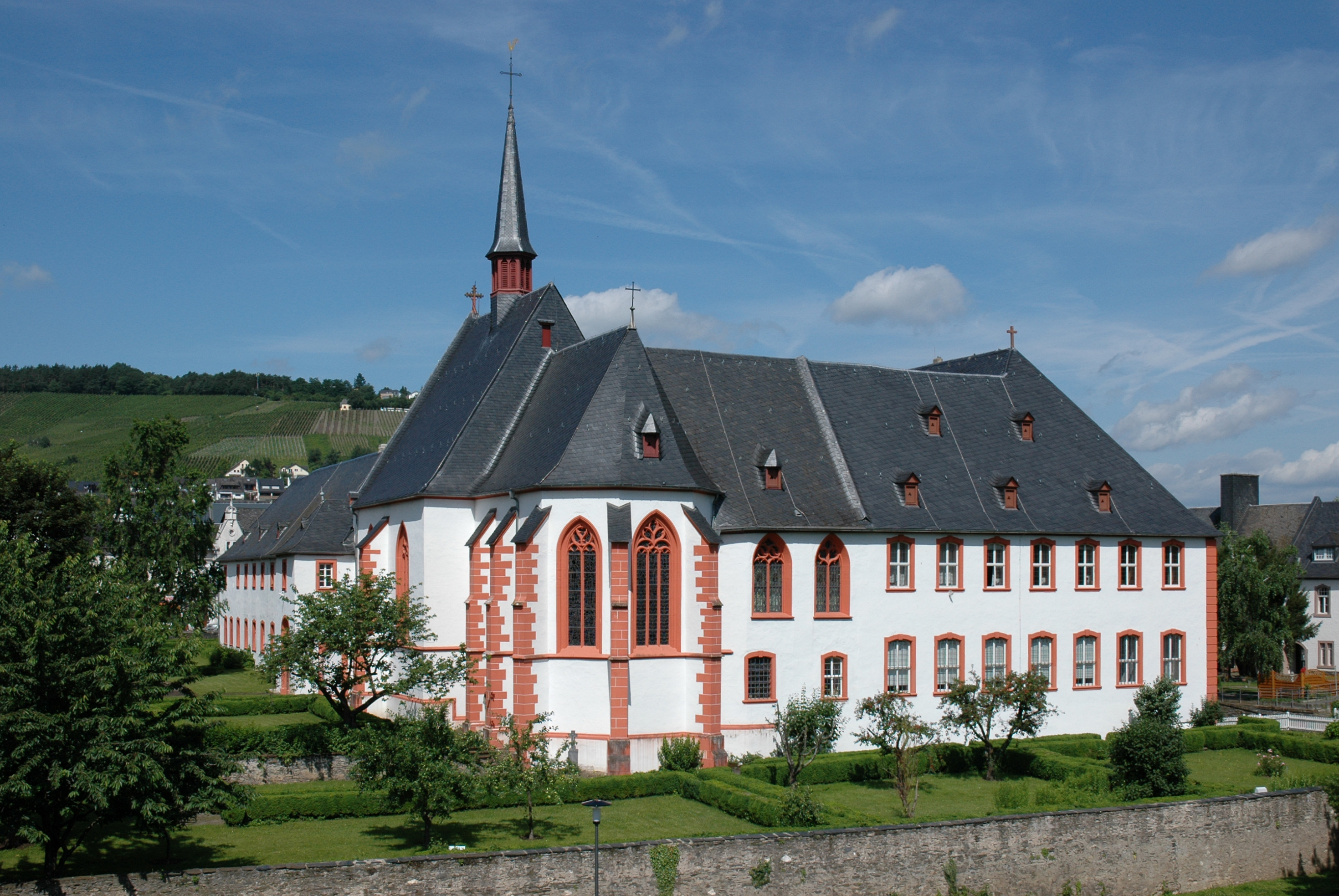

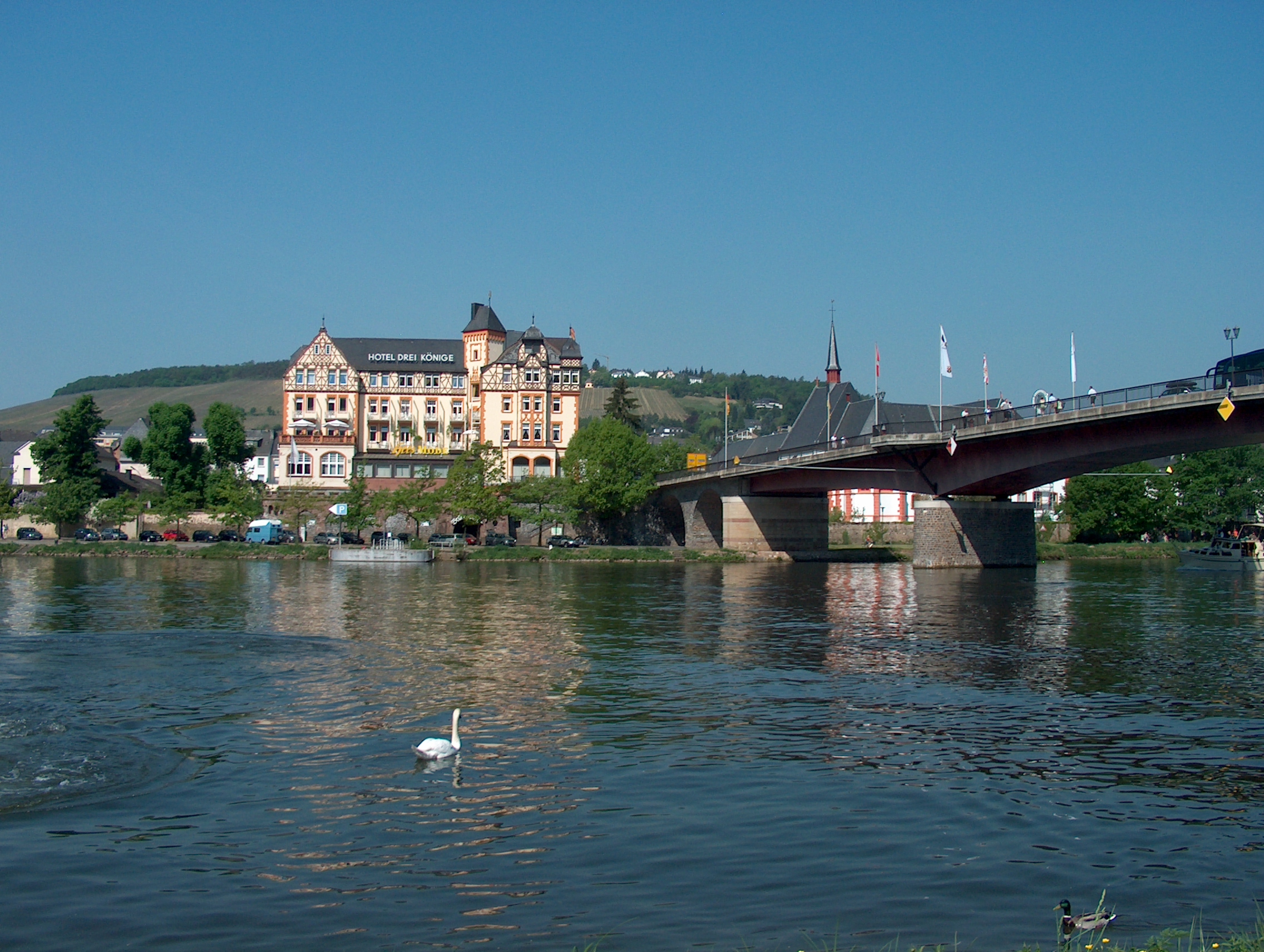 Worth seeing in Bernkastel is the
Worth seeing in Bernkastel is the
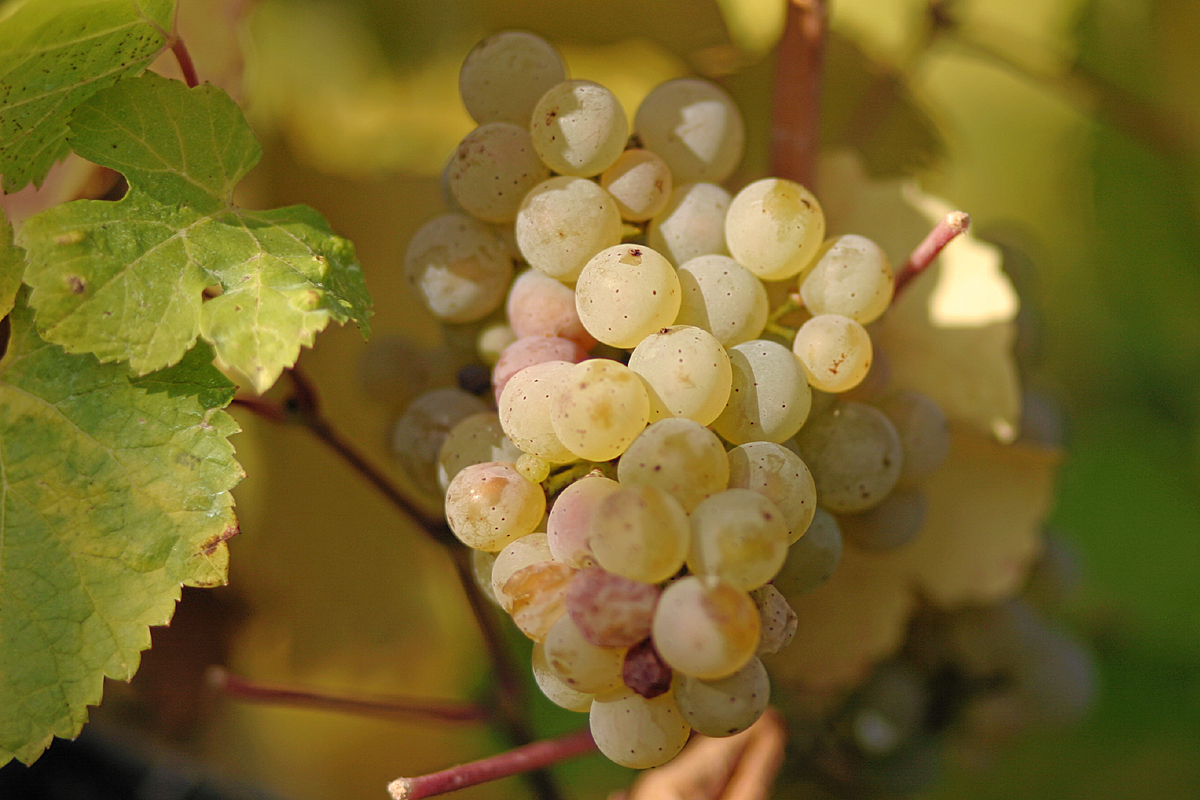
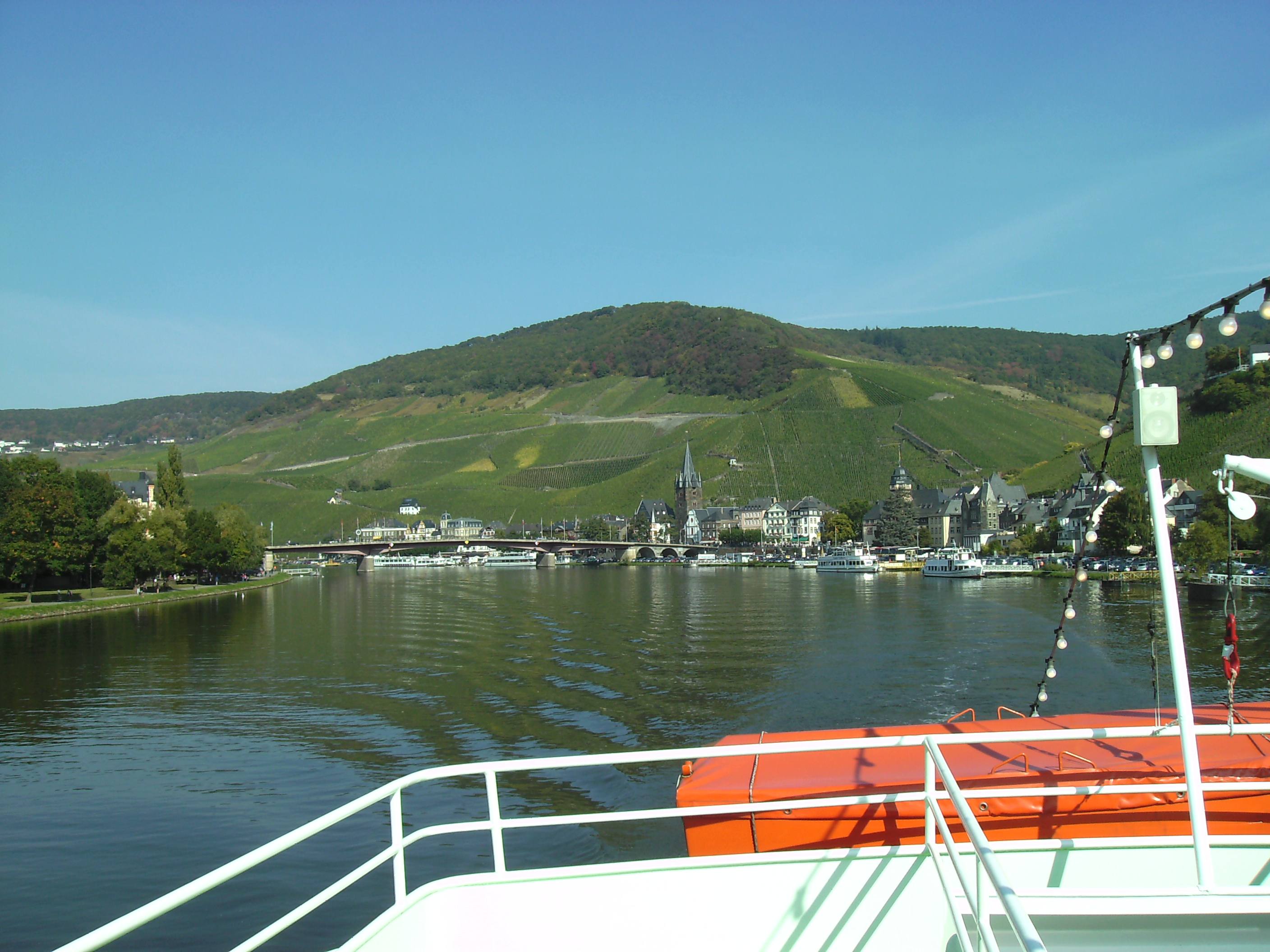 Historically, the most important economic sector has been
Historically, the most important economic sector has been Moselwein e. V.
/ref> There are still many wineries in Bernkastel-Kues today. Riesling is the customary grape variety, although smaller quantities of other varieties, such as Burgunder, Rivaner, Kerner and Dornfelder, are also grown. Within town limits, the winemaking appellations – ''Großlagen'' – Münzlay (Wehlen), Badstube (Bernkastel) and Kurfürstlay (Bernkastel, Kues and Andel) are represented by the following vineyards:
 *
*
Town’s official webpage
Official webpage in English of Tourism of Bernkastel-Kues in Moselle Valley
at
Constituent community of Andel
Constituent community of Wehlen
''Moselfestwochen''
{{Authority control Bernkastel-Wittlich
German
German(s) may refer to:
* Germany (of or related to)
**Germania (historical use)
* Germans, citizens of Germany, people of German ancestry, or native speakers of the German language
** For citizens of Germany, see also German nationality law
**Ger ...
). The crayfish, also canting, as the blazon calls it a ''Krebs'' (a word applied to any of a number of crustacean creatures), stands for Nikolaus von Kues
Nicholas of Cusa (1401 – 11 August 1464), also referred to as Nicholas of Kues and Nicolaus Cusanus (), was a German Catholic cardinal, philosopher, theologian, jurist, mathematician, and astronomer. One of the first German proponents of Renai ...
, whose family name was Cryfftz (the same as ''Krebs'' in High German). There are only two other towns in Germany whose arms bear a crustacean charge, namely Bad Wurzach in the Allgäu and Cottbus.
Culture and sightseeing



 Worth seeing in Bernkastel is the
Worth seeing in Bernkastel is the mediaeval
In the history of Europe, the Middle Ages or medieval period lasted approximately from the late 5th to the late 15th centuries, similar to the post-classical period of global history. It began with the fall of the Western Roman Empire a ...
marketplace with its gabled timber-frame houses from the 17th century, foremost among which is the narrow ''Spitzhäuschen'' (“Pointed House”) from 1416. Around the ''St. Michaelsbrunnen'' (“ Saint Michael’s Fountain”) from 1606 gathers a row of well-preserved buildings and also the Renaissance Town Hall from 1608. The Graach Gate is an often visited tourist attraction. Above the constituent community of Bernkastel lie the Castle Landshut ruins, a former summer residence of the Archbishops of Trier that was destroyed by fire on 8 January 1692. It today serves as a popular lookout point over the Moselle valley. Also worth seeing is the only town gate that is still standing, the ''Graacher Tor'' (“ Graach Gate”).
The town furthermore has several squares at its disposal; beyond the mediaeval marketplace are the ''Platz am Bärenbrunnen'' (“Square at the Bear’s Fountain”) and the ''Karlsbader Platz'' (“Karlovy Vary Square” – named after the partner town, which is called ''Karlsbad'' in German
German(s) may refer to:
* Germany (of or related to)
**Germania (historical use)
* Germans, citizens of Germany, people of German ancestry, or native speakers of the German language
** For citizens of Germany, see also German nationality law
**Ger ...
) opened in July 2005. The ''Doctorbrunnen'' (“Doctor Fountain”) depicts scenes of the old legend about a local wine, the famous "Bernkasteler Doctor". Another well-known point of interest is the Late Gothic
International Gothic is a period of Gothic art which began in Burgundy, France, and northern Italy in the late 14th and early 15th century. It then spread very widely across Western Europe, hence the name for the period, which was introduced by t ...
''St. Nikolaus-Hospital'' ('' Cusanusstift''), an Electoral complex of Nikolaus von Kues
Nicholas of Cusa (1401 – 11 August 1464), also referred to as Nicholas of Kues and Nicolaus Cusanus (), was a German Catholic cardinal, philosopher, theologian, jurist, mathematician, and astronomer. One of the first German proponents of Renai ...
. The institution's library has an outstanding scientific range of works. It is also well known for its chapel, where the heart of the great philosopher, cardinal and polymath Nikolaus von Kues
Nicholas of Cusa (1401 – 11 August 1464), also referred to as Nicholas of Kues and Nicolaus Cusanus (), was a German Catholic cardinal, philosopher, theologian, jurist, mathematician, and astronomer. One of the first German proponents of Renai ...
(Cusanus) is buried. Near the outlying centre of Wehlen lies the former Machern Monastery in whose rooms are now found a winery, a house brewery and a restaurant.
Regular events
* ''MoselMusikFestival'' (May to October) * ''Weinfest der Mittelmosel'' (“Wine Festival of the Middle Moselle”, each year on the first weekend in September) – with, among other things, a parade and fireworks * Christmas market in the mediaeval town. Many local vendors sell everything from mulled wine to handmade trinkets. * ''Tage alter Chormusik'' (“Days of Choir Music”, each year in the week after Easter * International rowing regatta on the Moselle for the ''Grüner Moselpokal'' (“Green Moselle Cup”) in September * Mittelalter-Spectacel (a mediaeval spectacle, every other year) * Bernkastel-Kueser Reitertage (“Riding Days”) * ''Moselfestwochen'' (classic music festival) * ''Straßenfest'' (street fair) in the constituent community of Kues * ''Tage der offenen Weinkeller'' (“Open Wine Cellar Days”) in the constituent community of Kues where the winemakers of Kues present and sell their wine in their own wine cellars. * Annual horse show on the Easter weekendEconomy and infrastructure
Public institutions
Education
* Nikolaus-von-Kues- Gymnasium * Freiherr-vom-Stein- Realschule *Hauptschule
A ''Hauptschule'' (, "general school") is a secondary school in Germany, starting after four years of elementary schooling (''Grundschule''), which offers Lower Secondary Education (Level 2) according to the International Standard Classification ...
with all-day school
* Grundschule Kues (Cusanusschule) ( primary school)
* Grundschule Wehlen (primary school)
* Professional training schools (''Berufsbildende Schulen'') with professional school (''Berufsfachschule'') I and II, upper professional school (''Berufsoberschule'')
* ''Hotelfachschule'' and ''Höhere Berufsfachschule für Hotelmanagement''
* ''Medizinisches Ausbildungszentrum Moseltal, Fachschule für Physiotherapie'' (medical training centre, specialization in physiotherapy)
* ''Burg-Landshut-Schule für Lernbehinderte'' (for students with learning difficulties)
* ''Rosenbergschule'' (special school
Special education (known as special-needs education, aided education, exceptional education, alternative provision, exceptional student education, special ed., SDC, or SPED) is the practice of educating students in a way that accommodates th ...
with focus on holistic development)
Authorities
* '' Amtsgericht'' * ''Bundesagentur für Arbeit'' (Federal agency for labour) * ''Cusanus-Krankenhaus'' (hospital
A hospital is a health care institution providing patient treatment with specialized health science and auxiliary healthcare staff and medical equipment. The best-known type of hospital is the general hospital, which typically has an emerge ...
, part of ''CTT Verbundkrankenhaus Bernkastel-Wittlich'')
* ''Dienstleistungszentrum Ländlicher Raum'' (a Rhineland-Palatinate institution that concerns itself with a broad array of matters relating to agriculture, winegrowing
Viticulture (from the Latin word for ''vine'') or winegrowing (wine growing) is the cultivation and harvesting of grapes. It is a branch of the science of horticulture. While the native territory of ''Vitis vinifera'', the common grape vine, ran ...
and oenology
Oenology (also enology; ) is the science and study of wine and winemaking. Oenology is distinct from viticulture, which is the science of the growing, cultivation, and harvesting of grapes. The English word oenology derives from the Greek word ' ...
, schools teaching in agricultural disciplines, and many other related things, in both advisory and developmental capacities)
* ''Finanzamt Bernkastel-Wittlich'' (financial office – branch location)
* ''Kraftfahrzeugzulassungsstelle Bernkastel-Wittlich'' (vehicle licensing centre – branch location)
* ''Polizeiinspektion'' (police service)
* ''Verbandsgemeindeverwaltung Bernkastel-Kues'' ('' Verbandsgemeinde'' administration)
* ''Vermessungs- und Katasteramt'' (surveying and cadastral office)
* ''Wasser- und Schifffahrtsamt Trier'' (water and shipping office – branch location)
* ''Wasserschutzpolizei'' (water protection police)
Established businesses
*Mageba
Mageba is a producer of textile machinery, based in Bernkastel-Kues, Germany.
History
Mageba was founded in 1957 by Hans Stang in Wuppertal/Barmen. Initially, Mageba focused on the manufacture of dyeing and finishing machines for narrow fabrics. ...
, a producer of textile machinery
* Median Kliniken GmbH with its rehabilitation centre, biggest employer in the Bernkastel-Wittlich district
* Moselland eG, biggest winemaking cooperative
A winemaking cooperative is an agricultural cooperative which is involved in winemaking, and which in a similar way to other cooperatives is owned by its members. The members in a winemaking cooperative are usually vineyard owners, who deliver gr ...
in Rhineland-Palatinate, turnover: €47,500,000
* Peter Mertes Weinkellerei GmbH, biggest German winery, turnover: €130,000,000 (2004)
Winegrowing

winegrowing
Viticulture (from the Latin word for ''vine'') or winegrowing (wine growing) is the cultivation and harvesting of grapes. It is a branch of the science of horticulture. While the native territory of ''Vitis vinifera'', the common grape vine, ran ...
. Within the Bernkastel area, vines are worked overwhelmingly in steep-slope vineyards in an area of 5,844 ha./ref> There are still many wineries in Bernkastel-Kues today. Riesling is the customary grape variety, although smaller quantities of other varieties, such as Burgunder, Rivaner, Kerner and Dornfelder, are also grown. Within town limits, the winemaking appellations – ''Großlagen'' – Münzlay (Wehlen), Badstube (Bernkastel) and Kurfürstlay (Bernkastel, Kues and Andel) are represented by the following vineyards:
Transport
Road
Bernkastel-Kues lies on '' Bundesstraßen'' 50 and 53. With the opening of the Burgbergtunnel (550 m), heavy traffic in the constituent community of Bernkastel was alleviated. Also, two bridges are found in town, one of which is the onlysuspension bridge
A suspension bridge is a type of bridge in which the deck (bridge), deck is hung below suspension wire rope, cables on vertical suspenders. The first modern examples of this type of bridge were built in the early 1800s. Simple suspension bridg ...
across the Moselle
The Moselle ( , ; german: Mosel ; lb, Musel ) is a river that rises in the Vosges mountains and flows through north-eastern France and Luxembourg to western Germany. It is a bank (geography), left bank tributary of the Rhine, which it jo ...
. Both were renovated in the 1990s. Public transport is integrated into the ''Verkehrsverbund Region Trier'' (VRT), whose fares therefore apply.
Rail
Until 31 December 1962, the narrow gauge ''Moseltalbahn'', also called the ''Saufbähnchen'', ran through Bernkastel-Kues. The railway station building stands at the water's edge in the constituent community of Bernkastel (right bank). Furthermore, there was aDeutsche Bahn
The (; abbreviated as DB or DB AG) is the national railway company of Germany. Headquartered in the Bahntower in Berlin, it is a joint-stock company ( AG). The Federal Republic of Germany is its single shareholder.
describes itself as the se ...
terminal station in the constituent community of Kues (left bank) whence a further railway track, the Wengerohr–Bernkastel-Kues line, linked the town with Wittlich and the Moselle line (Cannons Railway
The ''Kanonenbahn'' (literally "Cannons Railway") is a former German military strategic railway between Berlin and Metz via Güsten, Wetzlar, Koblenz and Trier. Metz is in Alsace-Lorraine, which was annexed by Germany after the Franco-Prussian Wa ...
). Both railways are disused and the tracks have been torn up. The slate-block railway station building, built “Moselle-style” in the early 20th century by '' Reichsbahn'' building director Franz Schenk, has likewise been preserved. An adjoining goods building was restored and is now used as a multifunctional building (''Güterhalle''). In what was once the track area there was at first an unsecured carpark. Now here is the ''Forum Alter Bahnhof'', a municipal service centre with an underground parking garage. The track itself was first converted as far as Lieser into the ''Mosel-Radweg'' (cycling trail), and then later into the ''Maare-Mosel-Radweg'' through Wittlich to Daun
Daun is a town in the Vulkaneifel district in Rhineland-Palatinate, Germany. It is the district seat and also the seat of the ' of Daun.
Geography
Location
The town lies in the , a part of the Eifel known for its volcanic history, geogra ...
in the Eifel
The Eifel (; lb, Äifel, ) is a low mountain range in western Germany and eastern Belgium. It occupies parts of southwestern North Rhine-Westphalia, northwestern Rhineland-Palatinate and the southern area of the German-speaking Community of ...
.
Water
Bernkastel-Kues is a stop on Rhine-Moselle
The Moselle ( , ; german: Mosel ; lb, Musel ) is a river that rises in the Vosges mountains and flows through north-eastern France and Luxembourg to western Germany. It is a bank (geography), left bank tributary of the Rhine, which it jo ...
cruises. Along the shore of the Moselle are many landing stages from which there are many tours daily.
Notable people
Nikolaus von Kues
Nicholas of Cusa (1401 – 11 August 1464), also referred to as Nicholas of Kues and Nicolaus Cusanus (), was a German Catholic cardinal, philosopher, theologian, jurist, mathematician, and astronomer. One of the first German proponents of Renai ...
(Cusanus) (1401–1464), philosopher, theologian, jurist and astronomer
* Charles IV, Duke of Lorraine (1604–1675), Duke of Lorraine, died in Bernkastel
*Hermann Schroeder
Hermann Schroeder (26 March 1904 – 7 October 1984) was a German composer and a Catholic church musician.
Life
Schroeder was born in Bernkastel and spent the greatest part of his life’s work in the Rheinland. His mother's family had common ...
(1904–1984), composer
*Heiner Thiel
Heiner Thiel (born January 14, 1957) is a German sculptor and curator. He is an exponent of concrete art.
''Untitled'', 2016
Life
Thiel studied history of art from 1978 to 1982 at the Johannes Gutenberg University in Mainz, and then went to ...
(born 1957), sculptor and curator
*Stuart Pigott
Stuart Pigott (born 26 May 1960 in Orpington, Kent) is a British wine critic and author who has lived in Berlin since 1993. Pigott mostly writes in German, and focuses on German wine. He writes for the specialist magazines ''Feinschmecker'' an ...
(born 1960), British, wine specialist, author and journalist
Twin towns – sister cities
Bernkastel-Kues is twinned with: *Karlovy Vary
Karlovy Vary (; german: Karlsbad, formerly also spelled ''Carlsbad'' in English) is a spa town, spa city in the Karlovy Vary Region of the Czech Republic. It has about 46,000 inhabitants. It lies on the confluence of the rivers Ohře and Teplá. ...
, Czech Republic
Panorama
Further reading
* Franz Schmitt: Chronik von Cues. Bernkastel-Kues 1981. * Franz Schmitt: Bernkastel im Wandel der Zeiten. Trier 1985.References
External links
Town’s official webpage
Official webpage in English of Tourism of Bernkastel-Kues in Moselle Valley
at
SWR Fernsehen
SWR Fernsehen is a German regional television channel targeting the states of Baden-Württemberg and Rhineland-Palatinate. It is produced by Südwestrundfunk (SWR) and is one of eight regional "third channels" broadcast by the ARD members.
Hist ...
Constituent community of Andel
Constituent community of Wehlen
''Moselfestwochen''
{{Authority control Bernkastel-Wittlich